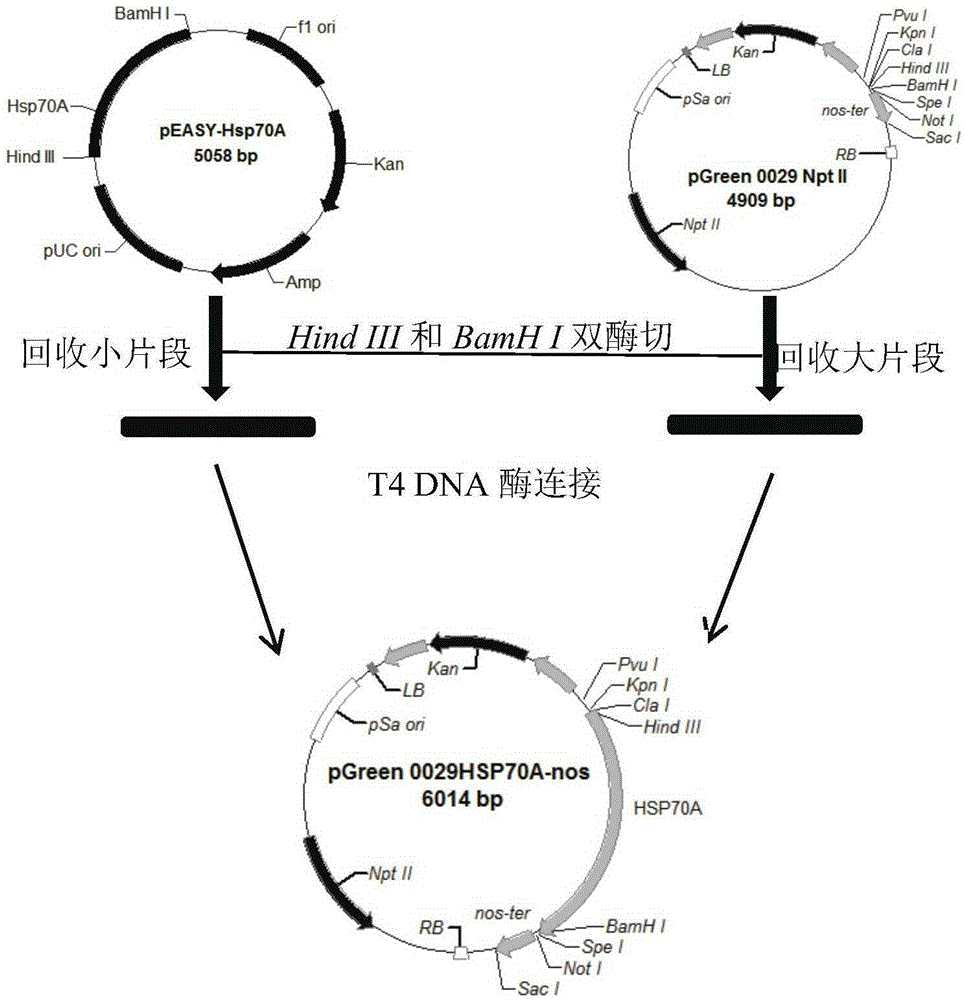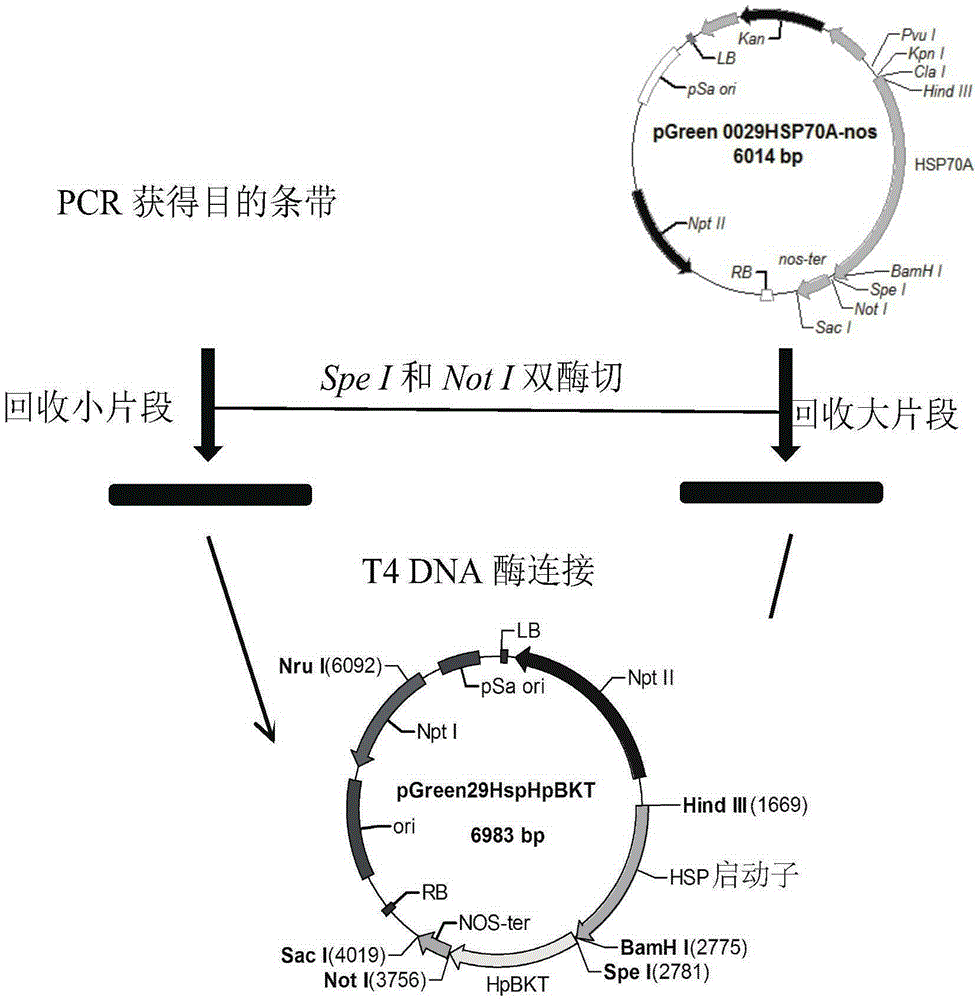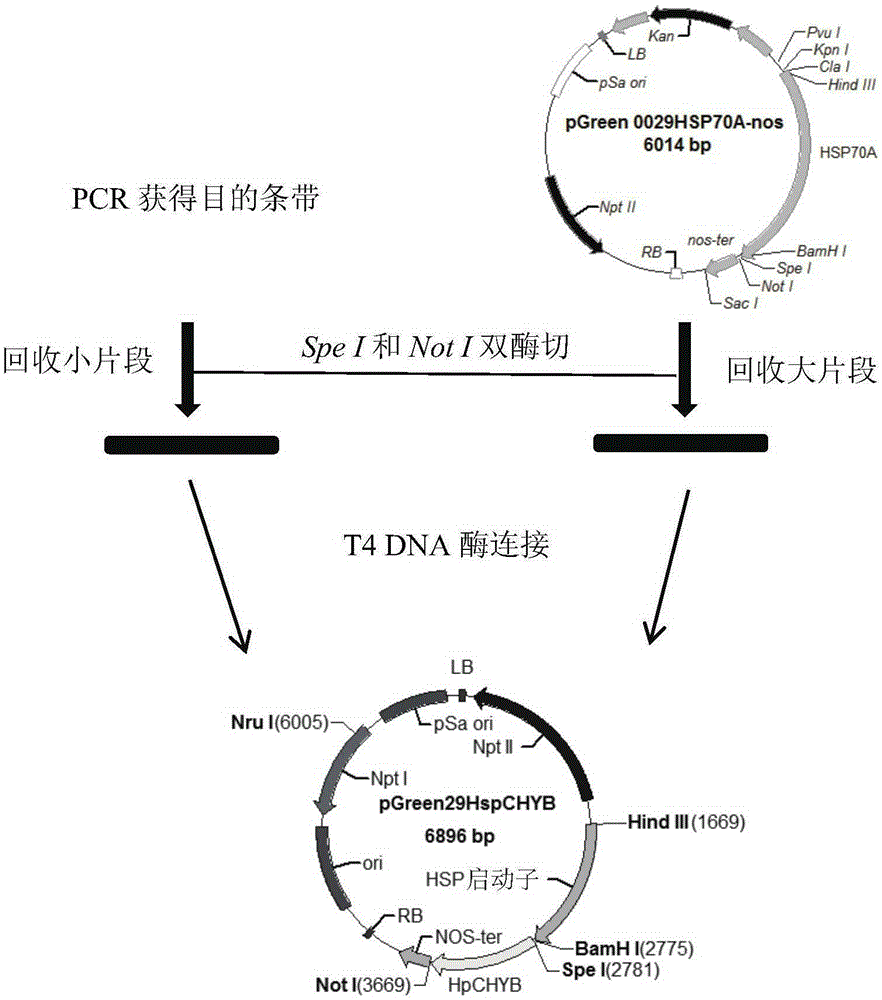Method for producing astaxanthin by using transgenic microalgae
A transgenic and astaxanthin technology, applied in the direction of unicellular algae, introduction of foreign genetic material using a vector, recombinant DNA technology, etc., can solve the problem of not being able to produce astaxanthin, and achieve a short growth cycle, high cell density, and culture technology. mature effect
- Summary
- Abstract
- Description
- Claims
- Application Information
AI Technical Summary
Problems solved by technology
Method used
Image
Examples
Embodiment 1
[0093] Example 1: Construction of a microalgae expression vector comprising an endogenous promoter from Chlorella pyrenoidosa
[0094] In this example, a microalgal expression vector containing an endogenous promoter of Chlorella pyrenoidosa was constructed. In this example, the endogenous promoter of Chlorella pyrenoidosa is the endogenous HSP70A promoter of Chlorella pyrenoidosa, and the microalgae expression vector pGreen0029 series of expression vectors.
[0095] 1.1 pEASY-Blunt-Hsp70A plasmid construction
[0096] (1) Take 50 mL of Chlorella pyrenoidosa liquid, refrigerate and centrifuge to remove the supernatant, grind with liquid nitrogen to extract its RNA and store it in a -80°C refrigerator to freeze the algae mud into a block, and transfer it to a research laboratory that has been poured in liquid nitrogen and pre-cooled. Grinding quickly in a bowl, adding an appropriate amount of liquid nitrogen continuously throughout the process to prevent RNA degradation. Ad...
Embodiment 2
[0110] Embodiment 2: Construction of the microalgal expression vector comprising BKT gene
[0111] In this example, a microalgae expression vector containing the BKT gene was constructed. In this embodiment, the BKT gene is the HpBKT gene from Haematococcus pluvialis, and the expression vector is pGreenII0029- containing the endogenous HSP70 promoter of Chlorella pyrenoidosa obtained in Example 1. Hsp-NosT vector.
[0112] Haematococcus pluvialis was provided by Jiaxing Zeyuan Biological Products Co., Ltd. Haematococcus pluvialis is cultured with pluvialis broth / medium. Extract approximately 10 8 For the total RNA of Haematococcus pluvialis cells, refer to the steps in the manual for the method. cDNA was synthesized in 15 minutes using TransScriptOne-StepgDNARemoval and cDNASynthesisSuperMix (purchased from Transgen) kits.
[0113] The registration number of the HpBKT gene sequence in the NCBI database is D45881.1, and the registration number of the HpBKT amino acid seq...
Embodiment 3
[0116] Embodiment 3: Construction of the microalgal expression vector comprising CHYB gene
[0117] In this example, a microalgae expression vector containing the CHYB gene was constructed. In this embodiment, the CHYB gene is the HpCHYB gene from Haematococcus pluvialis, and the expression vector is the pGreenII0029-containing endogenous HSP70 promoter of Chlorella pyrenoidosa obtained in Example 1. Hsp-NosT vector.
[0118] The registration number of the HpCHYB gene sequence in the NCBI database is AY187011.1, and the registration number of the HpCHYB amino acid sequence in the NCBI database is AAO53295.1. Such as image 3 As shown, the CHYB gene fragment was cloned from the cDNA of Haematococcus pluvialis obtained in Example 2 with the upstream primer CHYBF containing the SpeI site and the downstream primer CHYBR containing the NotI site. The resulting HpCHYB gene fragment and the pGreen0029-HSP vector obtained in Example 1 were digested with SpeI and NotI. The digest...
PUM
 Login to View More
Login to View More Abstract
Description
Claims
Application Information
 Login to View More
Login to View More - R&D
- Intellectual Property
- Life Sciences
- Materials
- Tech Scout
- Unparalleled Data Quality
- Higher Quality Content
- 60% Fewer Hallucinations
Browse by: Latest US Patents, China's latest patents, Technical Efficacy Thesaurus, Application Domain, Technology Topic, Popular Technical Reports.
© 2025 PatSnap. All rights reserved.Legal|Privacy policy|Modern Slavery Act Transparency Statement|Sitemap|About US| Contact US: help@patsnap.com



